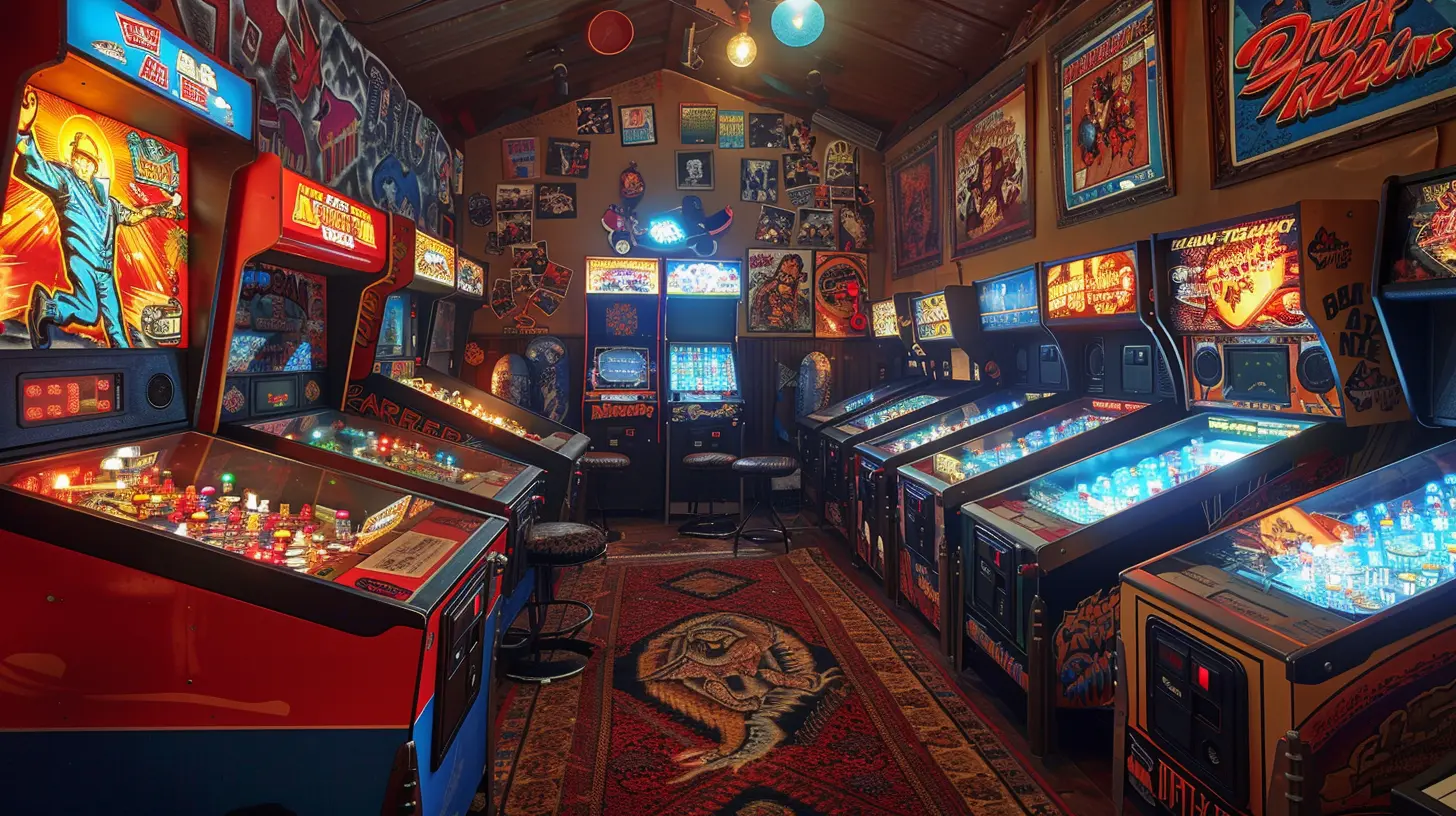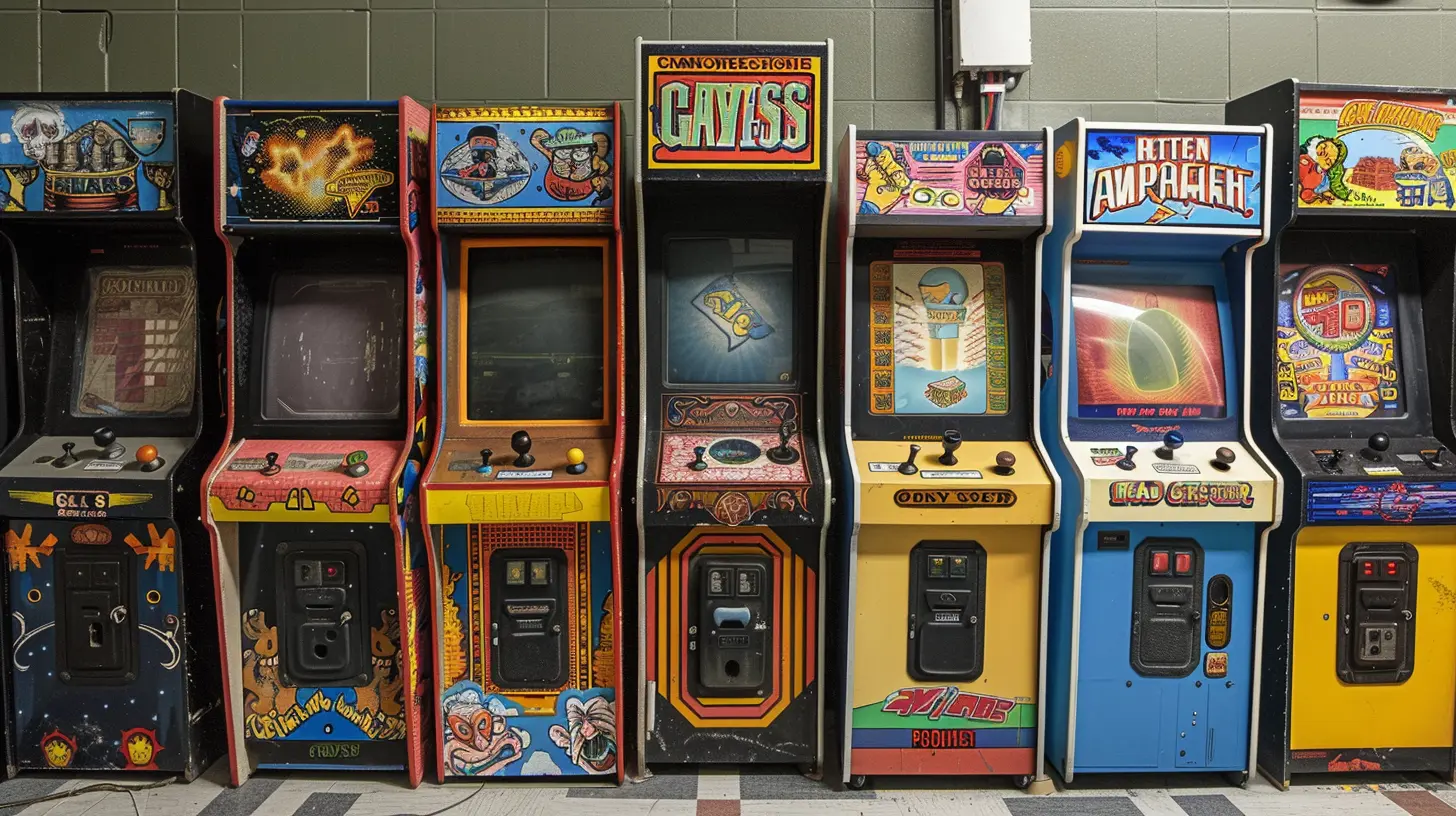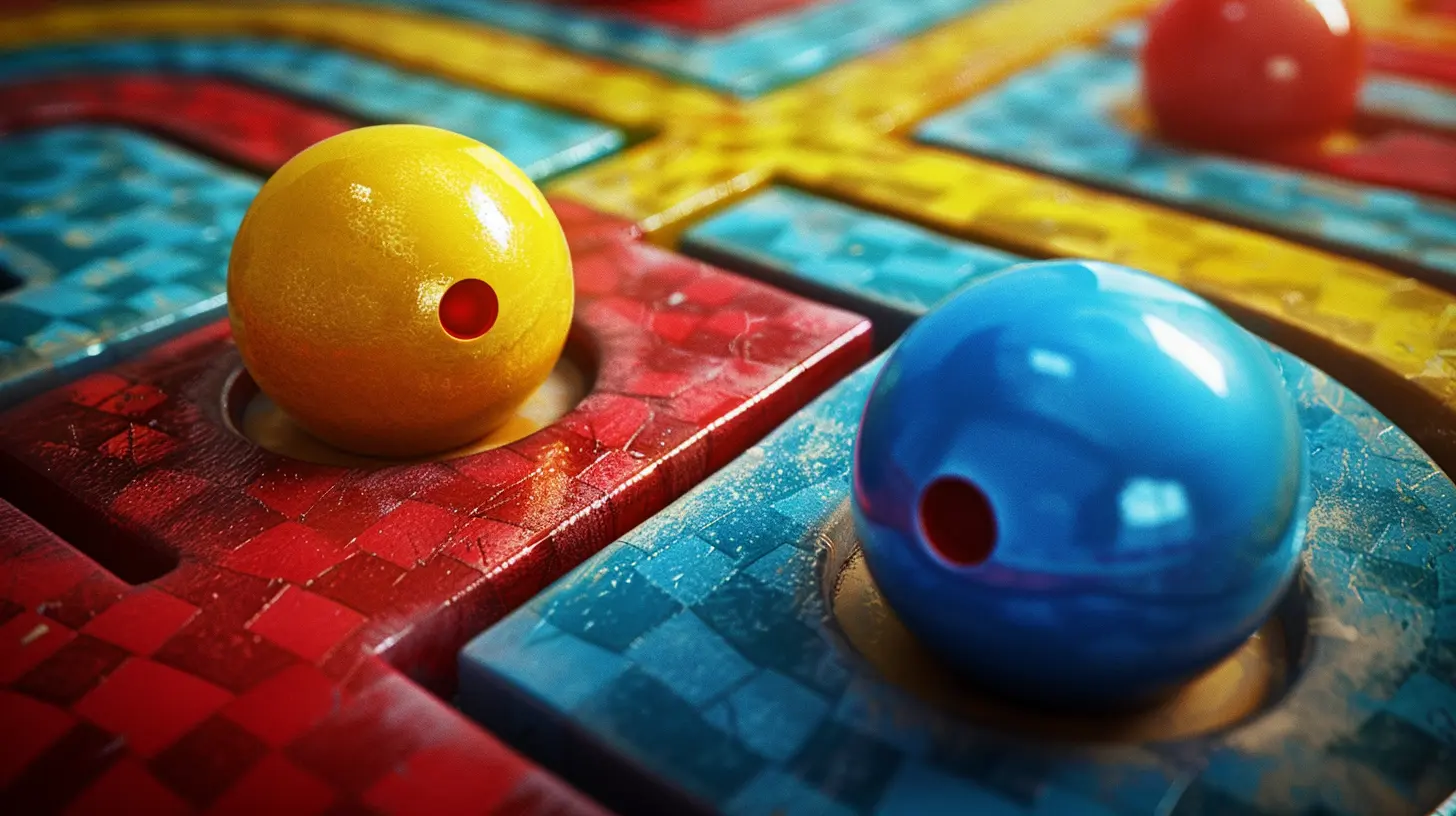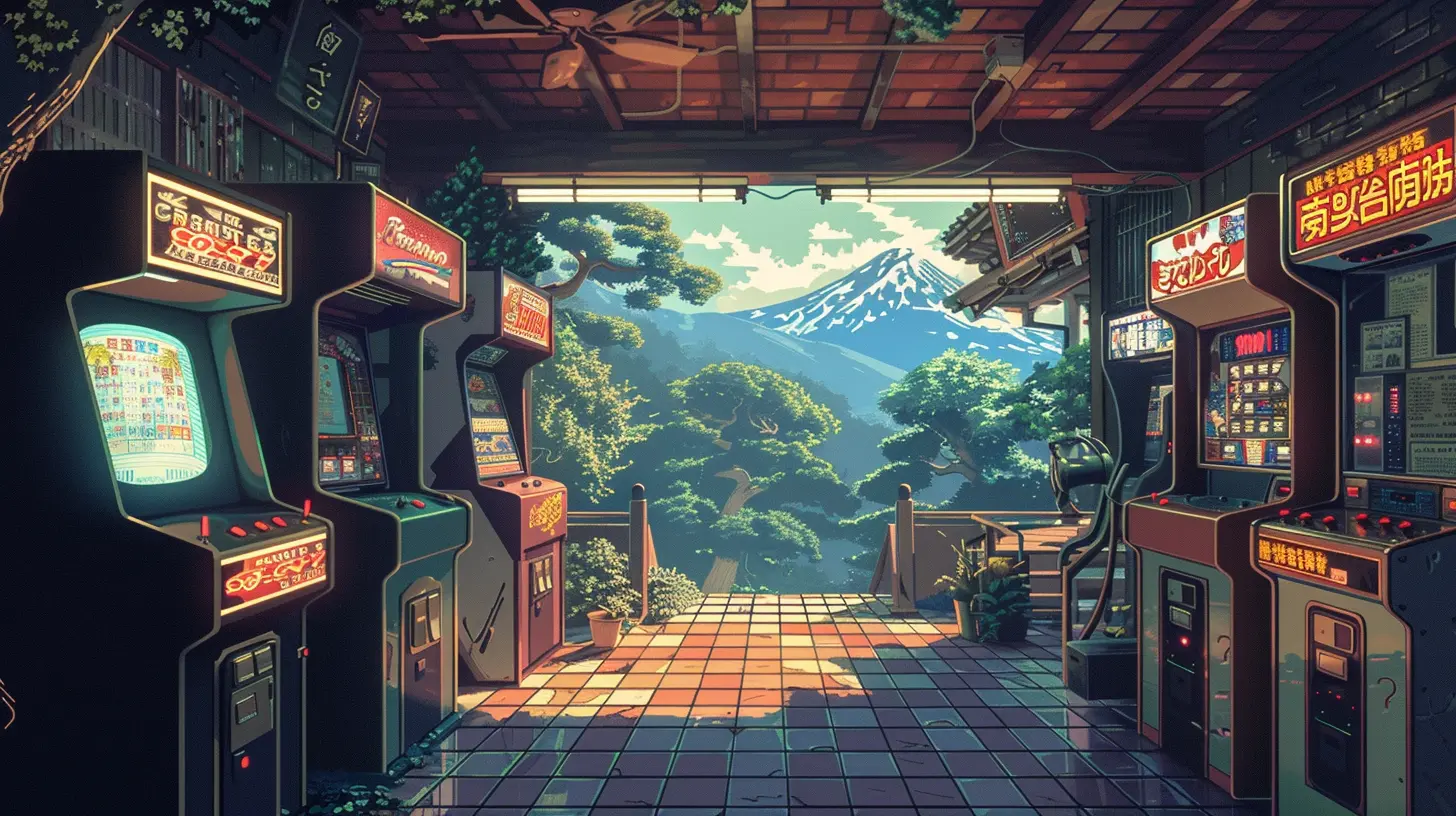How Arcade Games Became the Original Puzzle Challenges
4 July 2025
Remember the good ol’ days when you’d walk into a neon-lit arcade, clutching a pocket full of quarters, and feel like you just stepped into a digital wonderland? Ah, the sound of buttons clicking, joysticks snapping back into place, and the hypnotic tunes of 8-bit magic—pure nostalgia.
But beyond the flashing lights and addictive jingles, arcade games were more than just entertainment machines. They were, in many ways, the very first digital puzzle boxes. Yep, before our phones started challenging our brains daily with Sudoku apps or digital escape rooms, arcade games were already laying down the groundwork for interactive logic, timing, memory... and pure, glorious frustration.
So, how exactly did arcade games become the original puzzle challenges? Buckle in, ‘cause we’re diving deep into that pixelated rabbit hole!
The Birth of Arcade Games: Simpler Tech, Smarter Design
Let’s face it—early arcade machines didn't have a lot of tech wizardry to work with. They were limited in graphics, memory, and controls. But guess what? That little limitation sparked a whole lot of creativity!Instead of focusing on realistic graphics or complex narratives (which just weren’t possible back then), game designers focused on what truly matters in a puzzle: the challenge of the mind. They created scenarios where your reaction time, problem-solving skills, and pattern recognition were constantly tested.
In short, they turned simplicity into strategy.
Take “Pac-Man,” for instance. On the surface, it's just a yellow disc gobbling dots. But stay with it long enough, and you start noticing patterns in ghost movements. You learn how to “read” the maze. It becomes an evolving puzzle where every level feels slightly harder and a lot smarter.
Puzzle Mechanics in Disguise
Ever looked at “Donkey Kong” and thought, “This is basically a platformer with a story”? True. But dig a little deeper. It's also a classic puzzle in disguise.Let me explain.
In “Donkey Kong,” your goal isn't just to move from point A to B. You’re climbing steel beams, dodging barrels, and figuring out timing—all while planning the shortest and safest path to the damsel in distress. You’re constantly computing routes and reacting in real time. Sounds like a classic logic puzzle, only it’s wrapped up in a playable cartoon.
And don’t even get me started on “Tetris.” I mean, come on—it's the king of arcade puzzle games. Falling blocks, rotating pieces, fitting them just right? That’s geometry, spatial awareness, and stress management rolled into one beautiful chaos. The longer you play, the faster it gets, and the more your brain has to hustle.
They Hooked Us with Brains Over Brawn
Here’s the genius part—arcade puzzle games didn’t rely on violence, complex stories, or high-end graphics. They hooked us with challenge. Pure, mental, white-knuckled challenge.Think “Q*bert,” where the goal was simply to change the color of blocks by hopping on them. Each level added new enemies, more rules. It became a game of memory and foresight. Addictive? Totally. Simple? Not even close.
Or “Bubble Bobble”—cute little dragons blowing bubbles to trap enemies. Sounds adorable, right? But you had to plan where to trap enemies, pop the bubbles at the right time, and collect items before you ran out of time. Super cute. Super strategic.
What’s so intriguing is how these games made us smarter without us even knowing it. They trained our brains to adapt, improve, and re-strategize. No wonder we kept coming back for "just one more quarter."
Multiplayer Fun with a Twist
Puzzle challenges weren’t just for solo adventurers. Games like “Dr. Mario” and “Puzzle Bobble” let us battle friends head-to-head. And man, the tension in those matchups was real.Suddenly, it wasn’t just about solving your own puzzle—it was about solving it faster or smarter than the person standing next to you. Real-time pressure plus friendly competition? That’s a brain workout with a side of trash talk.
And with each win or loss, we learned something. Timing. Strategy. Defense. Offense. Even a little psychology—like throwing off your opponent by pretending to struggle when you were actually setting up a massive combo. Classic mind games.
Arcade Games Set the Blueprint for Modern Puzzle Games
It’s wild to think about how these early machines influenced today’s digital puzzle landscape.You ever played “Candy Crush”? Recognize the matching mechanics? It’s a dressed-up version of old-school tile-matching logic. “Portal”? That’s just a spatial puzzle with a physics twist. “Among Us”? Social deduction wrapped in an arcade-style mini-game format.
Modern puzzle games owe a massive debt to those classic cabinets. They took the same core principles—challenge, pattern, timing, and replayability—and just added modern bells and whistles.
But the DNA? That started in the arcade.
Why We Still Love Arcade Puzzle Challenges Today
There’s something timeless about those original arcade puzzles. They were raw, honest, and brutally fair. You messed up? That was on you. No auto-saves. No tutorials holding your hand. Just you, a joystick, and your wits.Maybe that’s why retro arcades are making a comeback. People crave those simple yet insanely clever challenges. Because even with all our modern tech, the joy of solving a tricky game level using only your instincts and reflexes never really goes out of style.
And let’s not forget the social aspect. Arcades were a place to share strategies, brag about high scores, or get crushed by the quiet kid who somehow mastered “Galaga.” Every visit was a communal brain-flexing session, and everyone walked out smarter (or at least more determined).
The Psychology Behind It All
Want to know why old-school arcade puzzle games felt so good? Dopamine.Each level completed, each combo scored, each boss beaten—it all tickled that reward system in our brains. Unlike modern games that hand out achievements for simply showing up, arcade games made you earn it. And that payoff? Oh, it was sweet.
Even today, studies show that solving puzzles activates parts of the brain responsible for pattern recognition, memory, and creative thinking. Arcade games tapped into that long before neuroscience caught on.
Whether you realized it or not, you weren’t just playing—you were problem-solving, adapting, and improving your cognitive skills. All in exchange for a quarter or two.
The Future: Arcades Are Not Dead
Though we don't see coin-operated machines on every street corner like in the '80s, the spirit of arcade puzzle challenges lives on. You’ve got barcades popping up, retro game events, even arcade-style mobile games that borrow heavily from the same playbooks.We’re also seeing vintage cabinets being restored and treasured like museum pieces. And let's be real—nothing beats the tactile feels of slamming physical buttons while chasing a high score.
Game devs today are still inspired by the magic of those classic puzzles. So while the format may evolve, the core experience—the thrill of cracking a mental challenge under pressure—is very much alive and well.
Final Thoughts: More Than Just Games
Arcade games were never just about racking up points. They were tests of logic, memory, reflex, and grit. They were digital puzzles hiding in plain sight, challenging anyone brave enough to pick up the controller.So next time you see an old arcade machine with a dusty “Start” button, don’t just walk past it. That’s not just nostalgia sitting there—it’s a brilliant brain teaser waiting to be solved. And who knows? It might just outsmart you. Again.
all images in this post were generated using AI tools
Category:
Arcade GamesAuthor:

Aurora Sharpe
Discussion
rate this article
2 comments
Ashley McFee
Arcade games: where solving pixelated puzzles was the ultimate brain workout! Who knew high scores and brain teasers could be such a fun combo?
November 4, 2025 at 4:00 AM

Aurora Sharpe
Absolutely! Arcade games truly blended fun and mental challenge, turning high scores into engaging brain workouts.
Kade McKinnon
This article brilliantly traces the evolution of arcade games as pioneers of puzzle challenges, highlighting their impact on gaming culture and problem-solving strategies. A must-read!
July 17, 2025 at 5:02 AM

Aurora Sharpe
Thank you for your kind words! I'm glad you enjoyed the article and found the exploration of arcade games' influence on puzzle challenges insightful.


